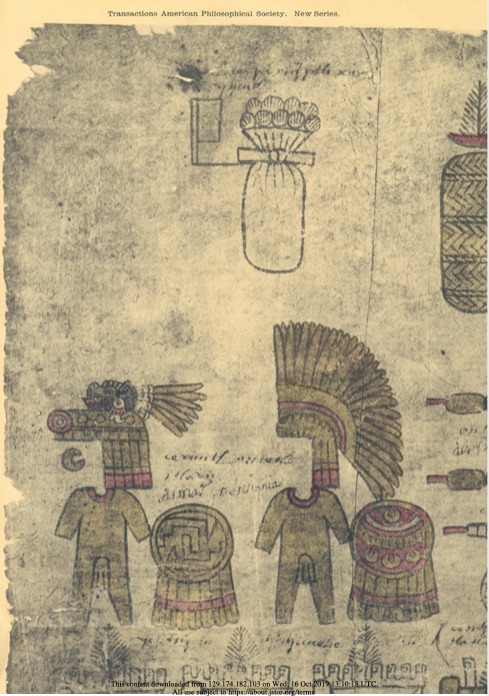Collecting Mexican Artifacts and Displaying Knowledge in the Early United States
This exhibit is a part of a larger book project which is in progress. That work explores how the professional, scientific apparatus in late nineteenth-century United States relied on the acquisitions of collections by cosmopolitan collectors who served as merchants or diplomats during the early republic of the United States. These collections became critical for early historians. William Prescott relied on such collections for his classic work on Mexico, which established a new historiographical framework for understanding early contact between indigenous peoples and Europeans.[1] These collectors deposited collections into public-facing institutions such as museums, which in turn became vital for constructing national identities in the United States through the display of these objects. These objects told a story of the United States and its perceived exceptionalism within the world by showing off the natural wonders and history of the newly formed United States These objects also emphasized the differences between the United States and the rest of the world, especially places that seemed “exotic” to viewers. These knowledge institutions transformed from an institution designed for the use of the few to an institution that helped create an information revolution. It changed from a place of solitary study to a site that promoted discourse as proprietors constructed exhibits designed to promote useful knowledge to visitors so they could better understand the world in which they lived and promote scientific progress in their daily lives.[2] However, these museums were also sites of creative erasure. In collecting artifacts of indigenous peoples and other cultures and presenting their stories in a way that decontextualized their civilizations, museum-builders reinvented their stories. This process resulted in the creation of a “common cause” through this construction of meaning using a new specialized scientific language designed to promote a set of shared values and goals for the United States.[3]
[1] William Hickling Prescott, History of the Conquest of Mexico, with a Preliminary View of the Ancient Mexican Civilization, and the Life of the Conqueror, Hernando Cortés, vol. 1 (New York: Harper and brothers, 1843), 143; Caroline Winterer, American Enlightenments: Pursuing Happiness in the Age of Reason, (New Haven ; Yale University Press, 2016), 107-109.
[2] See my dissertation, George D. Oberle, “Institutionalizing the Information Revolution: Debates over Knowledge Institutions in the Early American Republic” (Ph.D., United States -- Virginia, George Mason University, 2016). Currently, I am preparing a revised manuscript for publication.
[3] I borrow the term common cause from the exceptional book by Robert Parkinson. Robert G. Parkinson, The Common Cause: Creating Race and Nation in the American Revolution (Chapel Hill: Published for the Omohundro Institute of Early American History and Culture, Williamsburg, Virginia, by the University of North Carolina Press, 2016). I rely on important museum scholarship such as Ellen Fernandez-Sacco, “Framing ‘The Indian’: The Visual Culture of Conquest in the Museums of Pierre Eugene Du Simitiere and Charles Willson Peale, 1779–96,” Social Identities 8, no. 4 (December 1, 2002): 571–618. In this work Sacco emphasizes the creation of national identity via displays which point to the otherness of Native Americans and the influence of the military to create the semblance of peaceful order. I am emphasizing the use of newly established scientific disciplines to promote a “common cause” in the United States. The result is in part the construction of racial identifies justified due to lack of scientific expertise of those foreigners who were displayed.
George D. Oberle III
